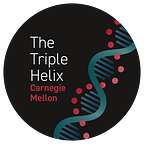Using CRISPR to Crack COVID-19
Samhitha Srinivasan
Using CRISPR technology, scientists are developing a COVID test that can provide results within minutes using a cell phone camera. They will use a Cas13 protein tagged with a molecule that glows when it detects a specific piece of COVID RNA. When more of the virus’ genome is present, it creates a brighter glow that can be picked up by a smartphone camera when used with a darkened box.
Living amid a pandemic in the 21st century with over 500,000+ deaths, it makes us question how technologically advanced we actually are. When we have self-driving cars, robots performing surgeries, the ability to explore extraterrestrial space and more, isn’t there technology to detect SARS-CoV-2 in a more accessible manner? Jennifer Doudna and Emmanuelle Charpentier, winners of the Nobel Prize in Chemistry, have developed CRISPR-Cas9 gene-editing technology which has the potential to do just that. The CRISPR-Cas9 gene-editing technology lies in its ability to eliminate from the gene pool what medical science identifies as faulty or abnormal genes that cause differences in individual people. However, we should therefore be aware of the ethical instabilities these technologies can pose.
By editing the genome, answering some of the most compelling problems known to mankind such as how to create a life without cystic fibrosis or treating cancer becomes a possibility. Cas9 is an enzyme used in CRISPR technology that acts like a pair of molecular scissors, capable of cutting desired strands of DNA. Attaching itself to the mutated location of the DNA, it cuts off that specific section which turns the targeted gene on or off. CRISPR (which stands for “clustered regularly interspaced short palindromic repeats”) are repeat copies of small pieces of viruses found within bacteria. Bacteria use them as a reference to identify viruses they have previously encountered. Bacteria fight off viruses by sending the Cas9 enzyme to identify encountered viruses and destroy them. Doudna and Charpentier used a similar approach to turn the microbe’s virus-fighting system into their hottest new lab tool.
During the early stages of the pandemic, with the intention to create vaccines using CRISPR technology, researchers decided to sequence the COVID-19 genetic code. Once Dr. Doudna and her team discovered that the CRISPR-Cas9 enzymes could do more than edit the genome, they quickly adapted their research so that it could be used to detect the coronavirus. One of her research members explains: “Some of them have a unique capacity to not only cut the genome that they’re recognizing, but also cutting reported nucleic acids that we provide to them in a diagnostic reaction.” They claim this procedure is simple enough that it could not only be used for rapid testing, but even for COVID testing at home: “We’re working on various different devices that would allow us to use basically a nasal swab to directly enter it into a little cartridge and then read results with a mobile phone. The new test uses a Cas13 protein tagged with a molecule that glows once it’s cut, as part of the genetic-snipping that occurs when it matches up with a specific piece of RNA. When more of the virus’ genome is present, more cuts occur — creating a brighter glow that can be picked up by a smartphone camera used with a darkened box.” Using CRISPR technologies, we will be able to understand the mechanism behind the virus’s attacks and how it penetrates cells in order to create effective vaccines and concoct useful therapies.
With a potential to create perfect organs, flawless characteristics, and altogether the designer human being, the future of the human race will include a percentage of artificial traits but it is our responsibility to maintain the healthy dosage. As Marcy Darnovsky states, “Allowing any form of human germline modification leaves the way open for all kinds — We could all too easily find ourselves in a world where some people’s children are considered biologically superior to the rest of us”. As Dr. Darnovsky emphasizes that editing the genome is essentially creating another human race, the evolution of mankind might disintegrate by targeting the lowest socioeconomic status. As the high elite are the first class to be able to afford genetic modification, creating artificial humans will become segregated by wealth. Even though the possibilities for of CRISPR are limitless, Dr. Robin Alta Charo — a leading expert in bioethics and professor of bio-law at University of Wisconsin-Madison — explains, “While I appreciate the fear, I think we need to realize that with every technology we have had these fears, and they haven’t been realized”. For the past 20 years, computers, robots, and technology have become smarter than the human race, yet we don’t live in a society controlled by machinery. The reason lies in the fact that humans have the ability to create and destroy our creations. Creating a society where health is maintained, happiness is created, and the human race strides forward is important. But doing so is only fair as long as the equality between all remains.
As advanced as humans may believe we may be, we must remember that we are entangled with nature. We tend to imagine a human world separate from natural laws, but the novel coronavirus reminds us of the extent to which we are intricately bound up with the life around us. There are many significant societal issues in our lives that we may never recognize or comprehend, but the ones that we do understand have the potential to push us further in a better direction.
Samhitha Srinivasan is a freshman at Carnegie Mellon University studying Cognitive Science with a concentration in Artificial Intelligence. Her interests lie at the intersection of music, technology and the brain. By engaging with the neuroscience and music department at CMU, she hopes to deepen her understanding of music and delve deeper into the role music plays in our lives. Outside of school, she loves to hang out with my friends and try new boba spots.
